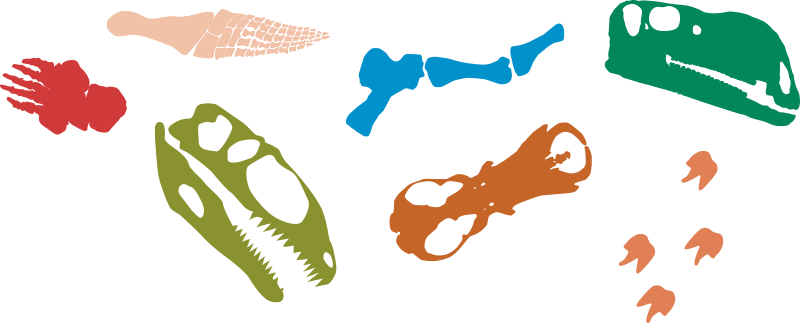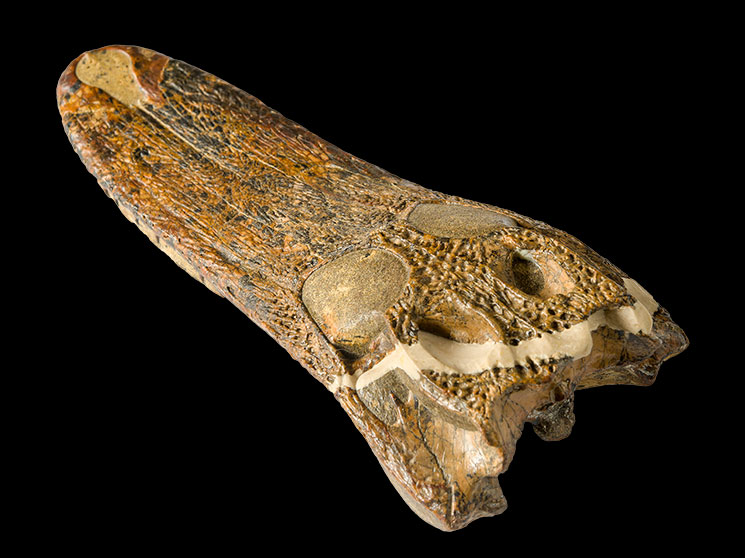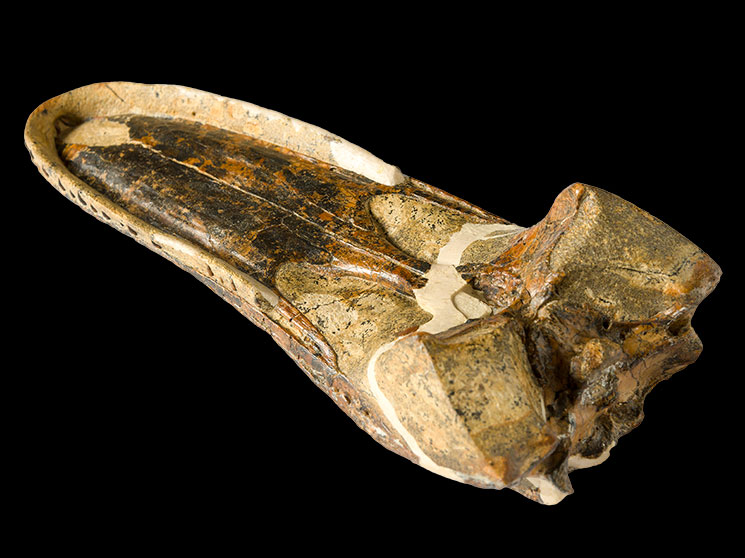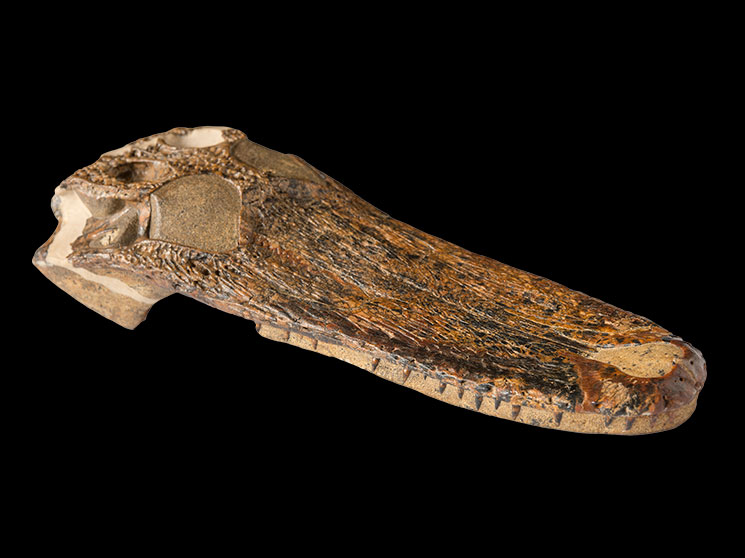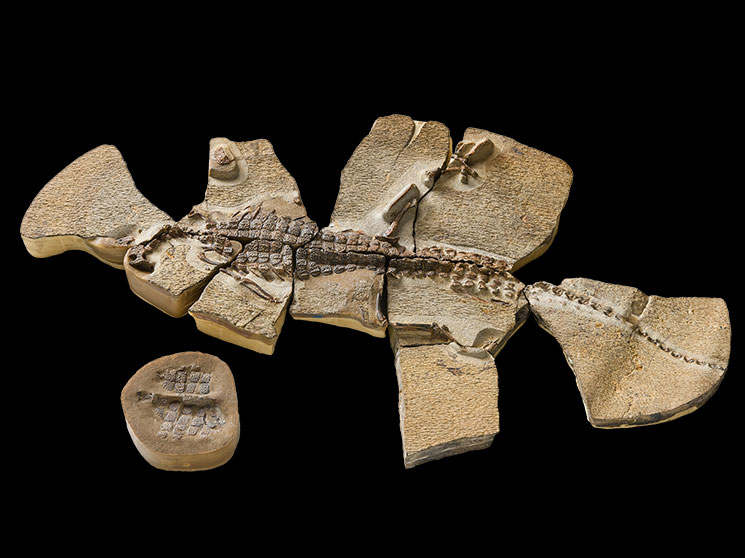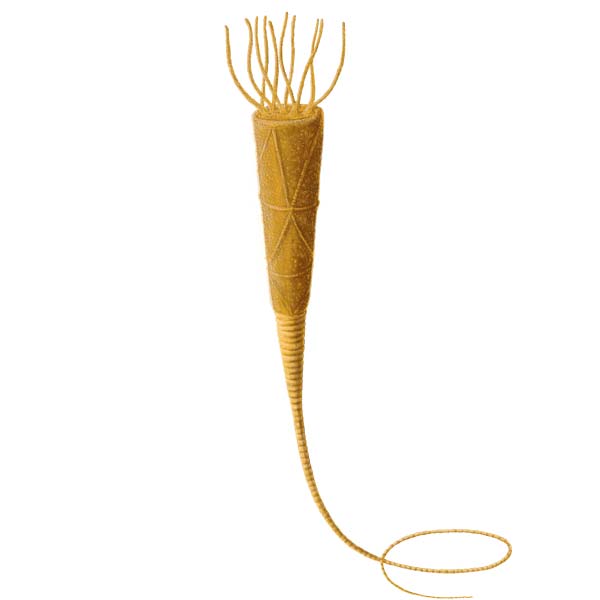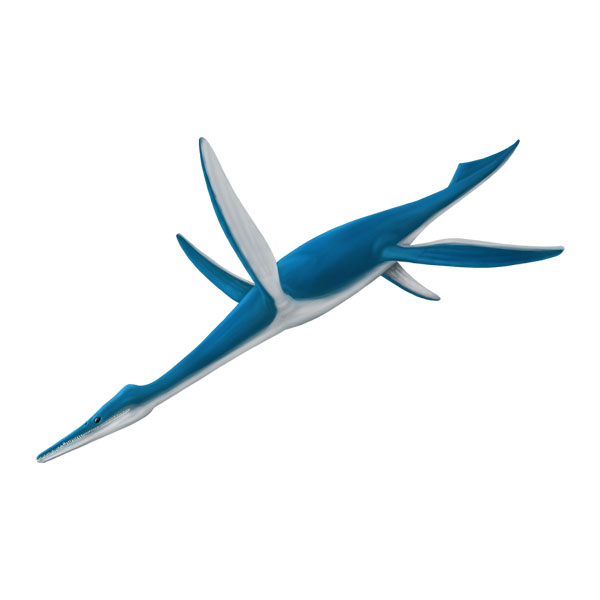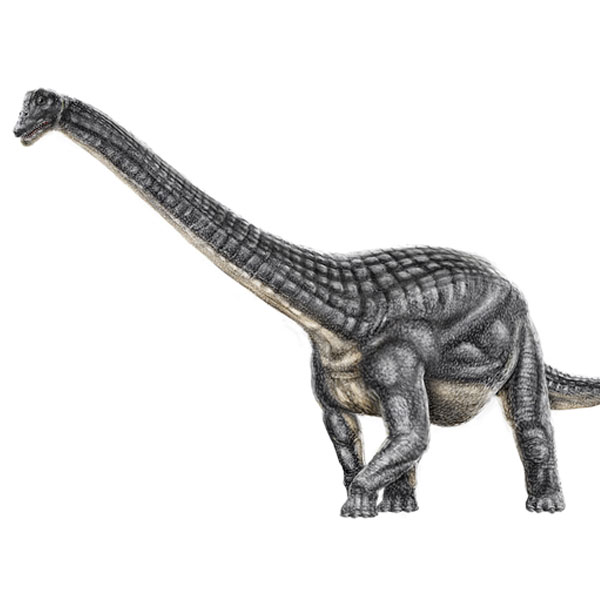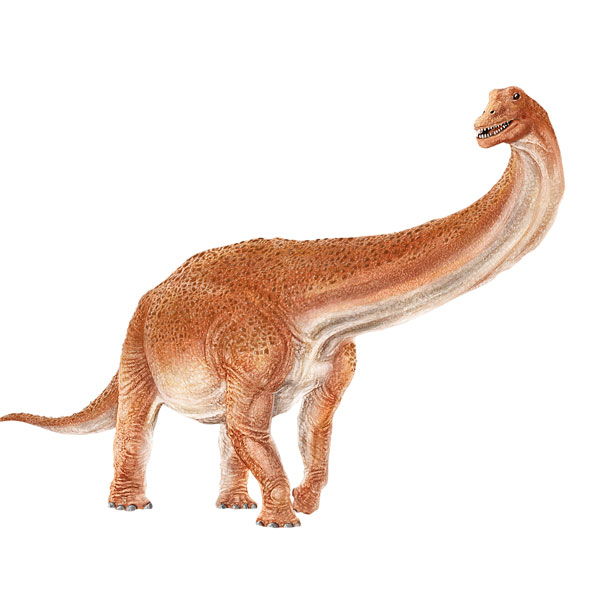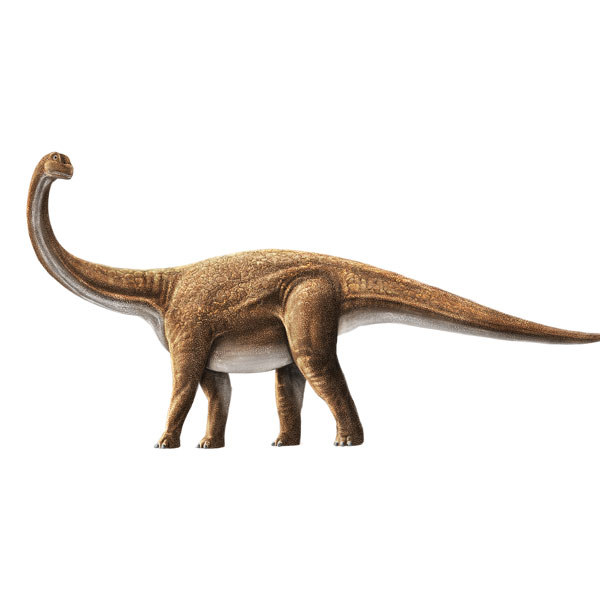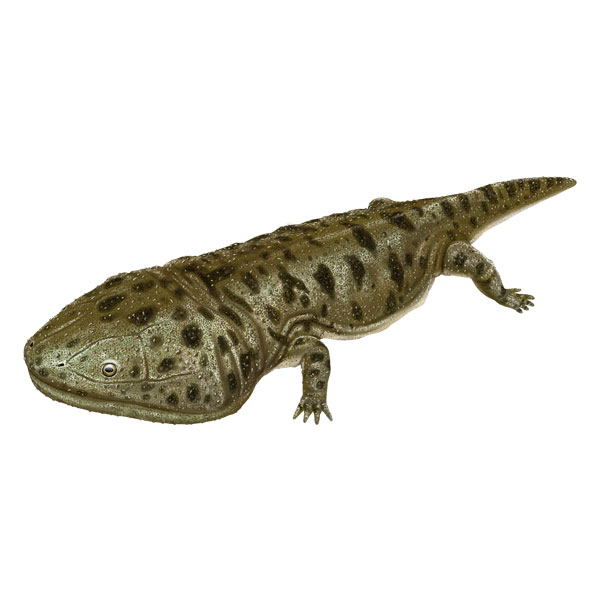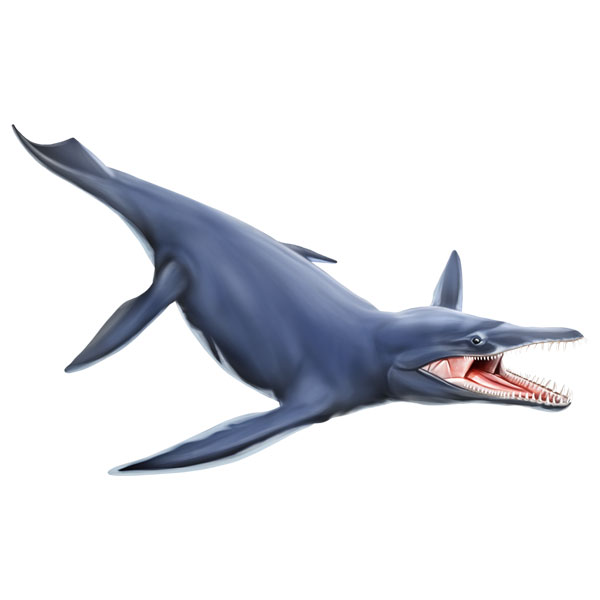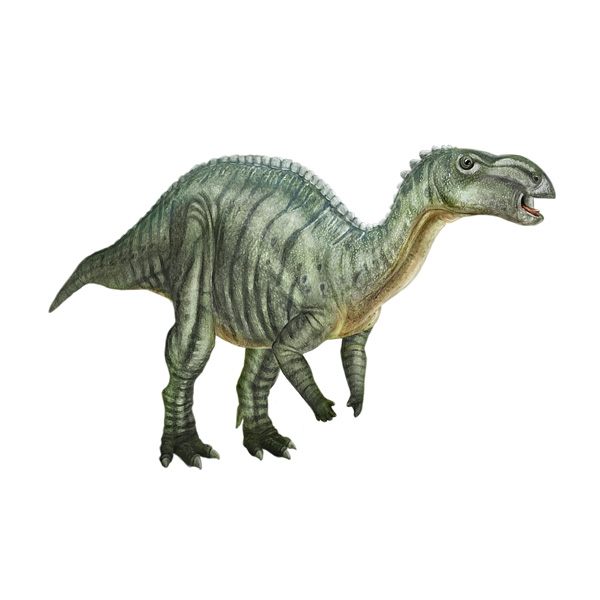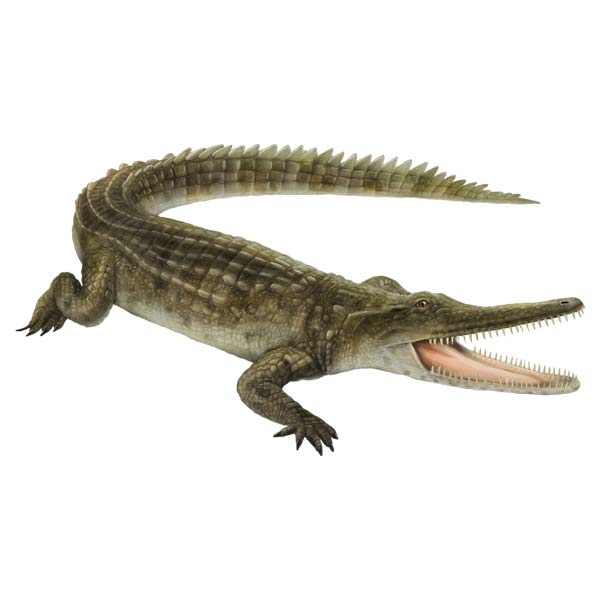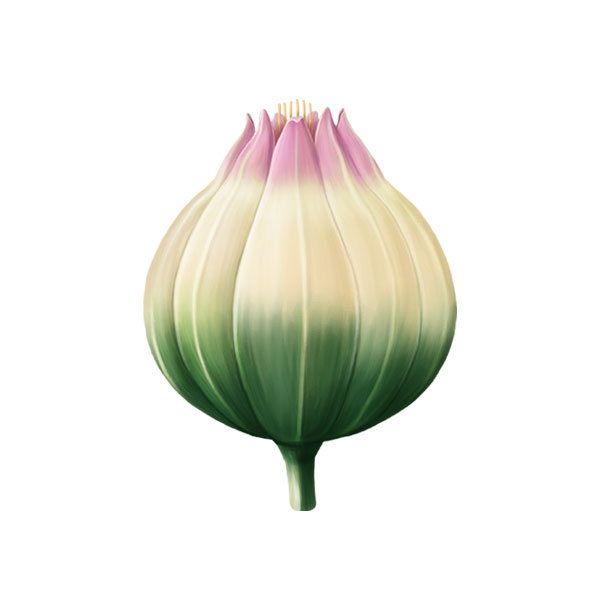Isisfordia duncani
Early crocodile in the outback
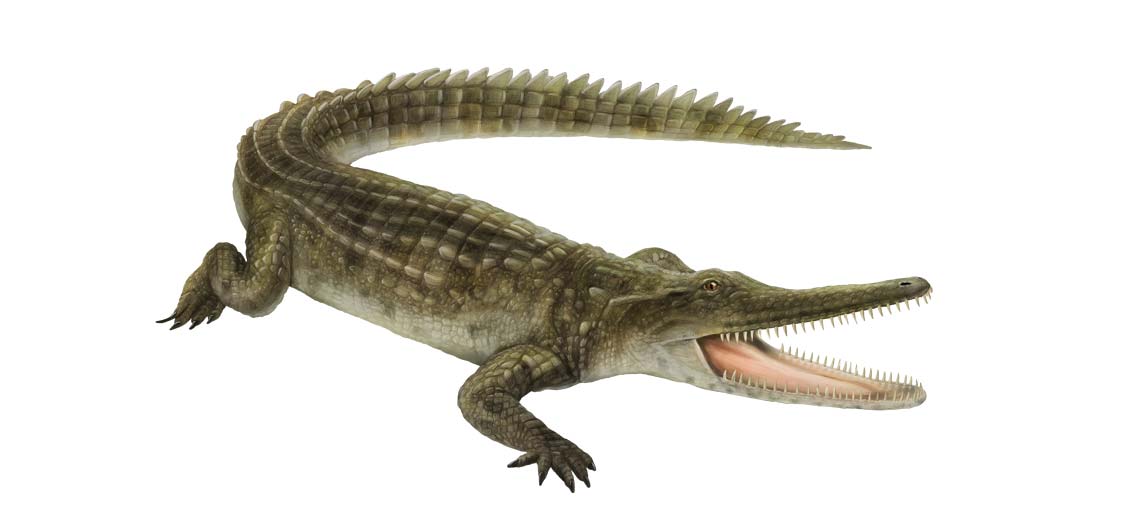
My fossil remains are beautifully preserved, with almost every bone present and in their original position. I am the oldest crocodile known from Australia, but the features of my anatomy are surprisingly modern-looking, suggesting I may belong to the lineage that gave rise to all living crocodiles.
How do you say my name?
How big was I?
I was approximately 1.1 metres long. I was smaller than my modern day crocodile cousins and about as long as a guitar.
When did I live and what did I eat?
I lived during the Cretaceous period, about 100 million years ago. I ate smaller animals, including fish, reptiles, and molluscs.
Where was I found?
My skeleton was found at Isisford, central western Queensland, by Ian Duncan, former Deputy Mayor of Isisford.
About my name
I was named by University of Queensland palaeontologist Steve Salisbury and his colleagues. I was named, Isisfordia duncani, for the town of Isisford, and Ian Duncan, who found the first fossil specimens.
What makes me special?
My fossil remains are remarkably complete and have been used to better understand the history and evolution of modern crocodiles. My fossils have only been found in Queensland.
Where can you find information on me?
You can find:
- my fossil on display in the Lost Creatures Exhibition, Queensland Museum
- a replica fossil and a life restoration on display in the Outer Barcoo Interpretive Centre in Isisford.


